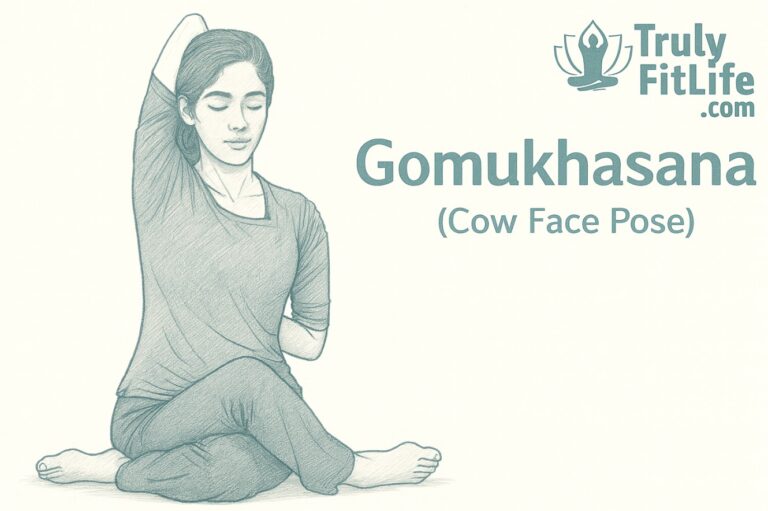
Introduction
Virasana (Hero Pose) is a traditional kneeling posture that offers grounding, stability, and inner calmness. The name comes from Sanskrit: “Vira” means hero or warrior and “Asana” means pose. Symbolically, Virasana represents the inner strength and calmness of a true hero, not through aggression, but through composure, discipline, and resilience.
This asana is widely practiced for meditation, pranayama, and digestive health. It resembles Vajrasana (Thunderbolt Pose), but in Virasana, the feet are placed wider apart, and the buttocks rest directly on the mat (or a block) between the heels rather than on top of them.
Step-by-Step Instructions to Practice Virasana – Hero Pose
1. Starting Position
- Kneel on your yoga mat with knees together.
- Place thighs perpendicular to the floor.
2. Foot Placement
- Move feet slightly wider than hip-width apart.
- The tops of the feet rest flat on the floor, toes pointing backward.
3. Sitting Down
- Gently lower the buttocks to the floor between the heels.
- If this feels uncomfortable, sit on a folded blanket or yoga block.
4. Hand Position
- Place palms on thighs facing downward.
- Alternatively, practice with Jnana Mudra (index finger touching thumb).
5. Alignment
- Keep the spine erect and shoulders relaxed.
- Chin parallel to the ground, gaze soft or eyes closed.
6. Breathing
- Inhale deeply, lengthening the spine.
- Exhale slowly, relaxing shoulders and thighs.
7. Duration
- Beginners: 1–3 minutes.
- Advanced: Hold up to 10–15 minutes during meditation or pranayama.
Key Alignment Tips
- Avoid letting knees splay apart; keep them together.
- Place support under buttocks if hips cannot touch the floor.
- Distribute weight evenly across sitting bones.
Benefits of Virasana – Hero Pose
🦴 Physical Benefits
- Improves Posture: Aligns the spine naturally.
- Stretches Thighs & Knees: Lengthens quadriceps and ankles.
- Aids Digestion: Sitting upright after meals supports digestive fire.
- Relieves Leg Fatigue: Excellent for runners and athletes with tired legs.
- Supports Meditation: Offers stability for long seated practices.
🧘♂️ Mental & Emotional Benefits
- Grounding & Stability: Promotes inner calm and balance.
- Builds Patience: Encourages stillness and mindfulness.
- Boosts Concentration: Enhances focus for pranayama and meditation.
- Relieves Stress: Encourages slow breathing and mental relaxation.
Contraindications & Precautions
- ❌ Avoid if you have severe knee or ankle injuries.
- ❌ Not recommended for recent foot surgery.
- ⚠️ Pregnant women should use props and avoid long holds.
- ⚠️ Release slowly to prevent knee strain.
👉 Modification: Place a block, cushion, or folded blanket under hips for comfort.
Modifications & Variations
- Supported Virasana: Sit on yoga block or bolster if hips are tight.
- Reclined Virasana (Supta Virasana): Lie backward into a deep restorative variation.
- Dynamic Variation: Combine with pranayama like Nadi Shodhana (Alternate Nostril Breathing).
Drishti (Gaze Point)
- Nasagra Drishti (Tip of Nose): For meditative focus.
- Closed Eyes: Encourages deep introspection.
Chakras Activated
- Muladhara (Root Chakra): Stability and grounding.
- Manipura (Solar Plexus Chakra): Supports digestion and energy balance.
- Anahata (Heart Chakra): Opens chest and improves emotional calmness.
Practice Suggestions
- Practice after meals for 5–10 minutes to aid digestion.
- Ideal for runners and athletes as a stretching posture.
- Beginners should start with props and gradually deepen the pose.
- Use it before pranayama and meditation to establish grounding.

